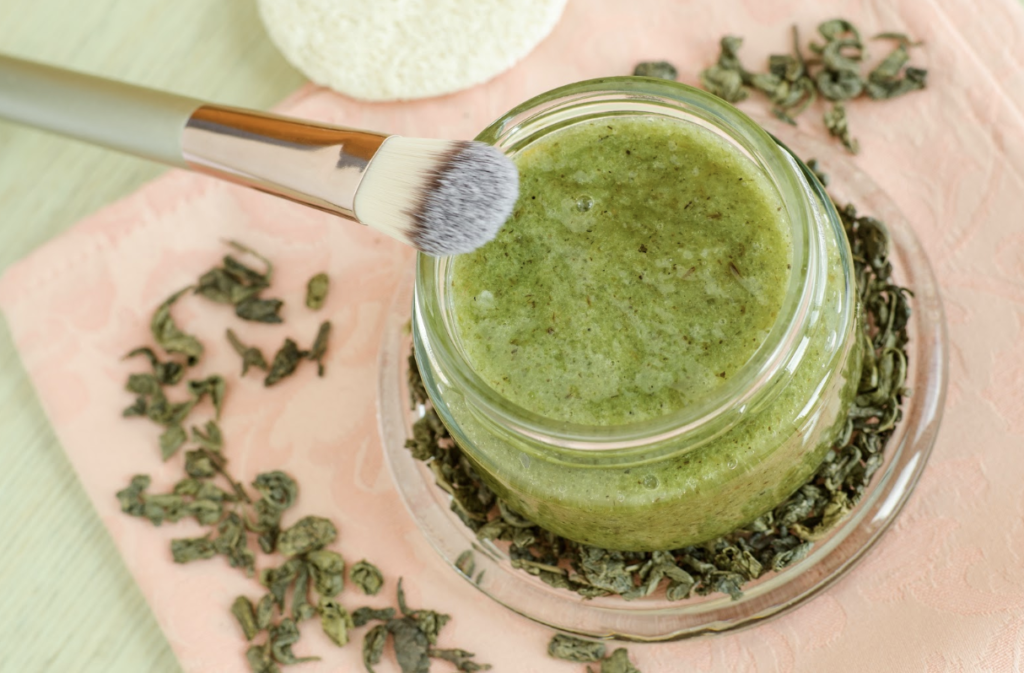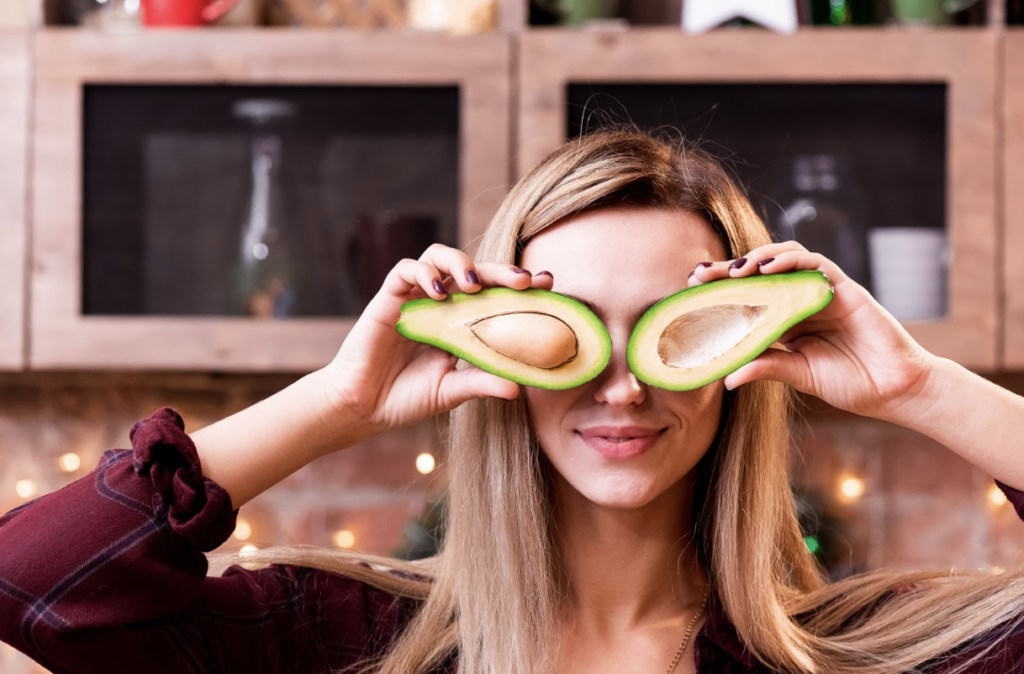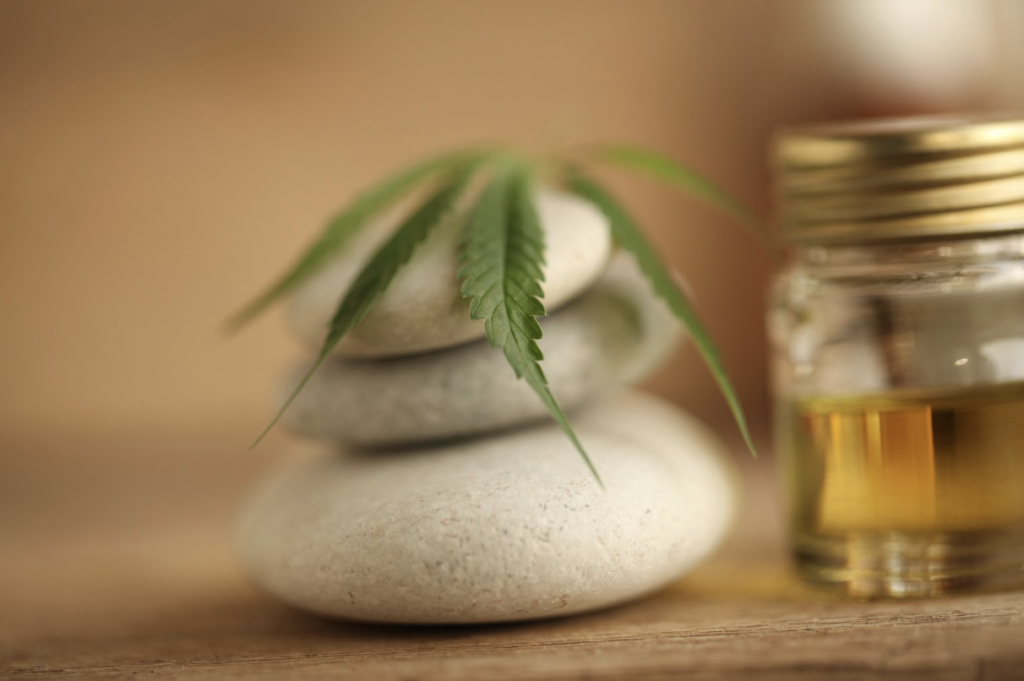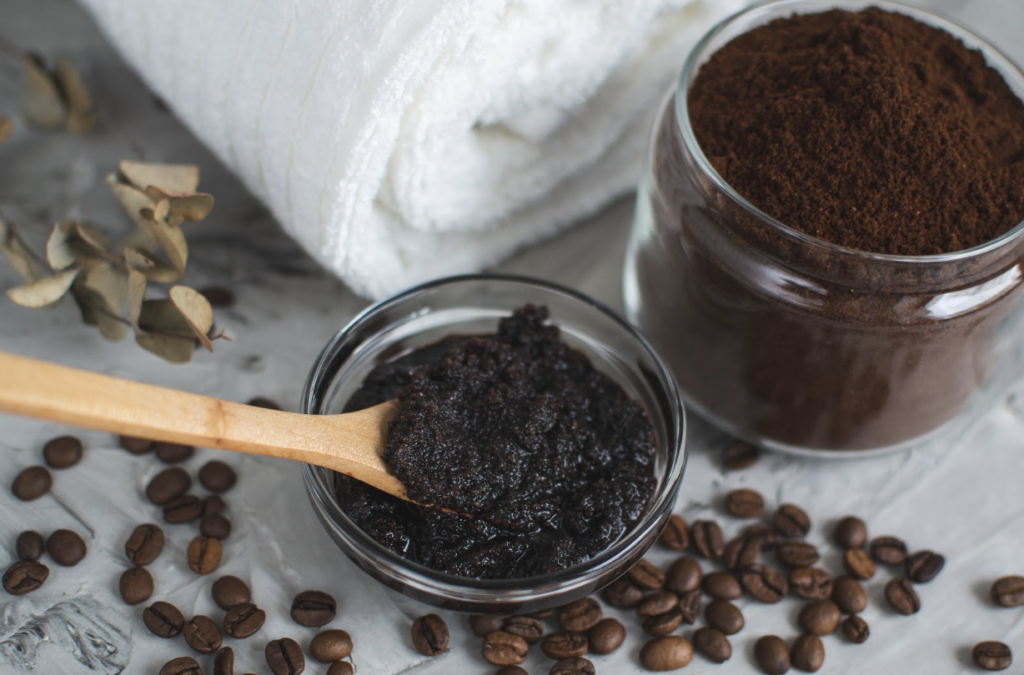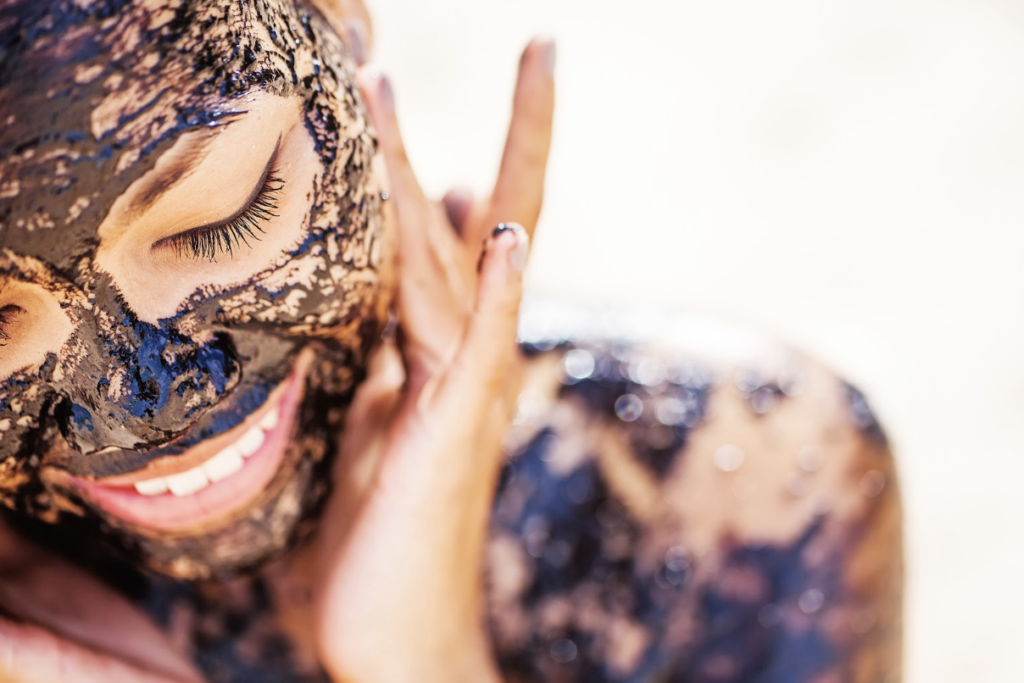DIY face masks may be a luxurious treat, but that’s just the surface of what they can do. Our skin is incredibly important to our overall well being.
The largest organ of the human body, our skin is a constant, flexible protector from destructive outside forces — such as germs, toxins, and even the sun. Taking care of dry or damaged skin isn’t just cosmetic, but important for your health. (1)
With dangerous chemicals in major skin care products, there is a huge movement of people taking matters into their own hands. As a integrative dermatologist that cares for kids and adults, I encourage people to know what it is that they are putting on — and essentially in — their bodies. Homemade skin care remedies and DIY face masks are a no-brainer.
How to Make DIY Face Masks
When creating face mask recipes, I include only natural, organic, and easily sourced ingredients that have scientific studies to back up their effectiveness for skin use. Most mask recipes are good for every skin type, including sensitive skins, and will provide an excellent, spa-like experience.
The goals of the best face masks are to:
- Clear out dead skin
- Moisturize dry skin
- Remove excess oils
- Pull out impurities
- Help pores of acne-prone skin
- Tighten and firm aging skin
Make sure you are not allergic to any ingredients before applying a homemade face mask. Grab a food safe bowl and spoon, because you are about to feel pampered!
Easy DIY Face Mask for Acne-Prone Skin
Acne affects 75% of people from ages 11-30, but anyone can get it. Your pores connect to oil glands in your skin that carry dead skin cells to the surface. These pores can become clogged and inflamed starting the formation of pimples. Bacteria, puberty, birth control, and other hormonal changes can also cause acne breakouts. (2, 3)
Ingredients: Apple Cider Vinegar, Green Tea, and Aloe Vera
Made from fermented apple cider, apple cider vinegar (ACV) contains organic acids that fight acne-causing bacteria and the inflammation that accompanies acne scarring. ACV can also help improve dry, oily skin. (4, 5, 6, 7, 8)
Sebaceous glands produce an oily substance called sebum to lubricate and waterproof our skin and hair, and too much sebum is one of the causes of acne. (9) That’s where green tea comes into play. Green tea contains polyphenols — powerful antioxidant molecules in several plant based foods. Green tea and other polyphenols are said to fight acne because of their anti-inflammatory, antimicrobial, and sebum-reducing properties. (10, 11)
Finally, the aloe vera plant grows leaves that fill with an amazing clear gel. This gel is the base of many skin treatments for things like burns, scrapes, cuts, and acne. It naturally contains salicylic acid and sulfur — both used in many over-the-counter and prescribed acne treatments. 12, 13, 14, 15, 16, 17)
Acne-Prone Face Mask Recipe
- ½ tablespoon of Apple Cider Vinegar
- 1 tablespoon of Matcha Green Tea Powder
- 2 tablespoons of Aloe Vera Gel
Combine all ingredients and mix thoroughly. Use a brush to apply in thin layers, drying between each layer, and let sit for at least 10 minutes. Rinse with warm water.
Usage Note: Mix apple cider vinegar with at least three times the amount of another liquid, if applying to skin directly. You do not want to use ACV alone as it may burn or irritate skin.
Hydrating DIY Face Mask for Dry Skin
Dry skin can happen for a variety of reasons, but it is often accompanied by irritated, itchy, inflamed areas of skin that bother even the most patient of people.
Ingredients: Avocado, Coconut Oil, Honey
Avocado is the king of healthy fruits. This fatty acid fruit can be applied to sunburns, used to hydrate skin, and contains potassium and vitamins A, C, D, and E that can be absorbed as well. (18, 19, 20)
The benefits of coconut oil as an anti-inflammatory and antibacterial agent are being discovered in the newest research. It outperforms virgin olive oil as a moisturizer and may even be used to treat eczema. (21, 22, 23)
Raw honey is an ancient skin solution, containing proteins, amino acids, vitamins, enzymes, minerals and antimicrobial properties. (24)
Hydrating Face Mask Recipe
- ½ smashed avocado
- 1 tablespoon warm coconut oil
- 1 tablespoon of honey
In a small bowl, combine all ingredients and mix thoroughly. Apply mixture to skin with fingers. Let sit for at least 15 minutes and rinse with warm water.
Usage Note: Honey face masks will require extra rinsing, but dry, dull skin will remain well nourished. It’s worth it.
Anti-Aging DIY Face Mask for Glowing Skin
We don’t have a fountain of youth, but maintaining our glow is an important part of putting our best foot forward and taking care of ourselves as we age.
Ingredients: CBD Oil, Lemon Juice, Coffee, Cocoa
The potential of topical CBD oil is exciting and new. Recent studies provide promising results for CB1 receptors in the skin for basal cell regeneration. At the bottom of the outermost layer of the skin, new skin cells are formed in the basal cell layer and push older cells toward the skin’s surface. There, they die and eventually fall away.
CBD oil may help basal cells regenerate and grow. This helps your skin look younger. (25) It also has been shown to have healing and anti-inflammatory effects on skin conditions such as psoriasis. (26, 27, 28)
Polyphenols in coffee are known to temper skin photoaging and the resulting spots and wrinkles. (29) Coffee is also full of antioxidants that help fight free radicals — the cause of oxidative stress in the body. (30)
Another powerful antioxidant, that is known to protect the skin from oxidative damage, is lemon. (31) This same property provides anti aging benefits for skin. (32)
Lastly, pure dark chocolate or cocoa has a “super fruit” level amount of antioxidants, second to none. (33) This flavanol rich food can increase blood flow and improve consistency, moisture, and density of skin. (34, 35)
Anti-Aging Mask Recipe
- 5 drops of CBD oil
- 1 tablespoon of lemon juice
- ½ tablespoon of coffee grounds
- 2 teaspoons of cocoa powder
Combine ingredients in a bowl and mix thoroughly. Massage mixture onto skin with fingers in a circular motion. Let sit for 10 minutes and rinse with warm water.
Usage Note: This course mixture will exfoliate well, so apply pressure while massaging.
In Summary
- The largest organ of the human body, our skin, is a constant, flexible protector from destructive outside invaders.
- Apple cider vinegar contains organic acids that fight acne-causing bacteria and the inflammation that accompanies acne scarring.
- Avocado can be applied to sunburns, used to hydrate skin, and contains potassium and vitamin E.
- Polyphenols in coffee are known to temper skin photoaging and the resulting spots and wrinkles.
Sources:
- Brohem, C. A., da Silva Cardeal, L. B., Tiago, M., Soengas, M. S., de Moraes Barros, S. B., & Maria‐Engler, S. S. (2011). Artificial skin in perspective: concepts and applications. Pigment cell & melanoma research, 24(1), 35-50. Abstract: https://www.ncbi.nlm.nih.gov/pubmed/21029393
- Bhatia, A., Maisonneuve, J. F., & Persing, D. H. (2004, June). Propionibacterium acnes and chronic diseases. In The Infectious Etiology of Chronic Diseases: Defining the Relationship, Enhancing the Research, and Mitigating the Effects: Workshop Summary., Knobler, SL et al.(eds.) (pp. 74-80). Full Text: https://www.ncbi.nlm.nih.gov/books/NBK83685/
- Thiboutot, D. (2004). Acne: hormonal concepts and therapy. Clinics in dermatology, 22(5), 419-428. Abstract: https://www.ncbi.nlm.nih.gov/pubmed/15556729
- Wang, Y., Kuo, S., Shu, M., Yu, J., Huang, S., Dai, A., … & Huang, C. M. (2014). Staphylococcus epidermidis in the human skin microbiome mediates fermentation to inhibit the growth of Propionibacterium acnes: implications of probiotics in acne vulgaris. Applied microbiology and biotechnology, 98(1), 411-424. Abstract: https://www.ncbi.nlm.nih.gov/pubmed/24265031
- Bae, J. Y., & Park, S. N. (2016). Evaluation of anti‐microbial activities of ZnO, citric acid and a mixture of both against Propionibacterium acnes. International journal of cosmetic science, 38(6), 550-557. Abstract: https://www.ncbi.nlm.nih.gov/pubmed/26940755
- Wang, Y., Kuo, S., Shu, M., Yu, J., Huang, S., Dai, A., … & Huang, C. M. (2014). Staphylococcus epidermidis in the human skin microbiome mediates fermentation to inhibit the growth of Propionibacterium acnes: implications of probiotics in acne vulgaris. Applied microbiology and biotechnology, 98(1), 411-424. Full Text: https://www.ncbi.nlm.nih.gov/pmc/articles/PMC3888247/
- Kapuścińska, A., & Nowak, I. (2015). Use of organic acids in acne and skin discolorations therapy. Postepy higieny i medycyny doswiadczalnej (Online), 69, 374-383. Abstract: https://www.ncbi.nlm.nih.gov/pubmed/25811473
- Sachdeva, S. (2010). Lactic acid peeling in superficial acne scarring in Indian skin. Journal of cosmetic dermatology, 9(3), 246-248. Abstract: https://www.ncbi.nlm.nih.gov/pubmed/20883299
- Pappas, A., Johnsen, S., Liu, J. C., & Eisinger, M. (2009). Sebum analysis of individuals with and without acne. Dermato-endocrinology, 1(3), 157-161. Full Text: https://www.ncbi.nlm.nih.gov/pmc/articles/PMC2835908/
- Adams, J. (2004). The proteasome: a suitable antineoplastic target. Nature Reviews Cancer, 4(5), 349. Abstract: https://www.ncbi.nlm.nih.gov/pubmed/28036057
- Elsaie, M. L., Abdelhamid, M. F., Elsaaiee, L. T., & Emam, H. M. (2009). The efficacy of topical 2% green tea lotion in mild-to-moderate acne vulgaris. Journal of drugs in dermatology: JDD, 8(4), 358-364. Abstract: https://www.ncbi.nlm.nih.gov/pubmed/19363854
- Liu, Haibo, Haiyan Yu, Jun Xia, Ling Liu, Guan J. Liu, and Hong Sang. “Topical azelaic acid, salicylic acid, nicotinamide, and sulphur for acne.” Cochrane Database of Systematic Reviews 11 (2014). Full Text: https://www.cochranelibrary.com/cdsr/doi/10.1002/14651858.CD011368/full
- Zander, E., & Weisman, S. (1992). Treatment of acne vulgaris with salicylic acid pads. Clinical therapeutics, 14(2), 247-253. Abstract: https://www.ncbi.nlm.nih.gov/pubmed/1535287
- Shalita, A. R. (1989). Comparison of a salicylic acid cleanser and a benzoyl peroxide wash in the treatment of acne vulgaris. Clinical therapeutics, 11(2), 264-267. Abstract: https://www.ncbi.nlm.nih.gov/pubmed/2525420
- Arif, T. (2015). Salicylic acid as a peeling agent: a comprehensive review. Clinical, cosmetic and investigational dermatology, 8, 455. Full Text: https://www.ncbi.nlm.nih.gov/pmc/articles/PMC4554394/
- Gupta, A. K., & Nicol, K. (2004). The use of sulfur in dermatology. Journal of drugs in dermatology: JDD, 3(4), 427-431. Abstract: https://www.ncbi.nlm.nih.gov/pubmed/15303787
- BRENEMAN, D. L., & ARIANO, M. C. (1993). Successful treatment of acne vulgaris in women with a new topical sodium sulfacetamide/sulfur lotion. International journal of dermatology, 32(5), 365-367. Abstract: https://www.ncbi.nlm.nih.gov/pubmed/8505165
- Stücker, M., Memmel, U., Hoffmann, M., Hartung, J., & Altmeyer, P. (2001). Vitamin B12 cream containing avocado oil in the therapy of plaque psoriasis. Dermatology, 203(2), 141-147. Abstract: https://www.ncbi.nlm.nih.gov/pubmed/11586013
- Han, J. I., Park, S. J., Kim, S. G., & Park, H. M. (2015). Antimicrobial effects of topical skin cream containing natural oil mixtures against Staphylococcus pseudintermedius and Malassezia pachydermatis. Vet Med Czech, 60, 202-207. Abstract: https://www.cabdirect.org/cabdirect/abstract/20153175341
- de Oliveira, A. P., Franco, E. D. S., Rodrigues Barreto, R., Cordeiro, D. P., de Melo, R. G., de Aquino, C. M. F., … & Maia, M. B. D. S. (2013). Effect of semisolid formulation of persea americana mill (Avocado) oil on wound healing in rats. Evidence-Based Complementary and Alternative Medicine, 2013.Full Text: https://www.ncbi.nlm.nih.gov/pmc/articles/PMC3614059/
- Peedikayil, F. C., Sreenivasan, P., & Narayanan, A. (2015). Effect of coconut oil in plaque related gingivitis—A preliminary report. Nigerian Medical Journal: Journal of the Nigeria Medical Association, 56(2), 143. Full Text: https://www.ncbi.nlm.nih.gov/pmc/articles/PMC4382606/
- Verallo-Rowell, V. M., Dillague, K. M., & Syah-Tjundawan, B. S. (2008). Novel antibacterial and emollient effects of coconut and virgin olive oils in adult atopic dermatitis. Dermatitis, 19(6), 308-315. Abstract: https://www.ncbi.nlm.nih.gov/pubmed/19134433
- Agero, A. L., & Verallo-Rowell, V. M. (2004). A randomized double-blind controlled trial comparing extra virgin coconut oil with mineral oil as a moisturizer for mild to moderate xerosis. Dermatitis, 15(3), 109-116. Abstract: https://www.ncbi.nlm.nih.gov/pubmed/15724344
- Burlando, B., & Cornara, L. (2013). Honey in dermatology and skin care: a review. Journal of Cosmetic Dermatology, 12(4), 306-313. Abstract: https://www.ncbi.nlm.nih.gov/pubmed/24305429
- Tóth, K. F., Ádám, D., Bíró, T., & Oláh, A. (2019). Cannabinoid Signaling in the Skin: Therapeutic Potential of the “C (ut) annabinoid” System. Molecules, 24(5), 918. Full Text: https://www.ncbi.nlm.nih.gov/pmc/articles/PMC6429381/
- Oláh, A., Markovics, A., Szabó‐Papp, J., Szabó, P. T., Stott, C., Zouboulis, C. C., & Bíró, T. (2016). Differential effectiveness of selected non‐psychotropic phytocannabinoids on human sebocyte functions implicates their introduction in dry/seborrhoeic skin and acne treatment. Experimental dermatology, 25(9), 701-707. Abstract: https://www.ncbi.nlm.nih.gov/pubmed/27094344
- Mounessa, J. S., Siegel, J. A., Dunnick, C. A., & Dellavalle, R. P. (2017). The role of cannabinoids in dermatology. Journal of the American Academy of Dermatology, 77(1), 188-190. Full Text: https://www.jaad.org/article/S0190-9622(17)30308-0/fulltext
- Oláh, A., Tóth, B. I., Borbíró, I., Sugawara, K., Szöllõsi, A. G., Czifra, G., … & Ludovici, M. (2014). Cannabidiol exerts sebostatic and antiinflammatory effects on human sebocytes. The Journal of clinical investigation, 124(9), 3713-3724. Full Text: https://www.ncbi.nlm.nih.gov/pmc/articles/PMC4151231/
- Fukushima, Y., Takahashi, Y., Hori, Y., Kishimoto, Y., Shiga, K., Tanaka, Y., … & Kondo, K. (2015). Skin photoprotection and consumption of coffee and polyphenols in healthy middle‐aged J apanese females. International journal of dermatology, 54(4), 410-418. Abstract: https://www.ncbi.nlm.nih.gov/pubmed/25041334
- Aguiar, J., Estevinho, B. N., & Santos, L. (2016). Microencapsulation of natural antioxidants for food application–The specific case of coffee antioxidants–A review. Trends in Food Science & Technology, 58, 21-39. Abstract: https://www.sciencedirect.com/science/article/abs/pii/S0924224416303272
- Calabrese, V., Scapagnini, G., Randazzo, S. D., Randazzo, G., Catalano, C., Geraci, G., & Morganti, P. (1999). Oxidative stress and antioxidants at skin biosurface: a novel antioxidant from lemon oil capable of inhibiting oxidative damage to the skin. Drugs under experimental and clinical research, 25(6), 281-287. Abstract: https://www.ncbi.nlm.nih.gov/pubmed/10713866
- Maia Campos, P. M., Gonçalves, G. M., & Gaspar, L. R. (2008). In vitro antioxidant activity and in vivo efficacy of topical formulations containing vitamin C and its derivatives studied by non‐invasive methods. Skin Research and Technology, 14(3), 376-380. Abstract: https://www.ncbi.nlm.nih.gov/pubmed/19159387
- Crozier, S. J., Preston, A. G., Hurst, J. W., Payne, M. J., Mann, J., Hainly, L., & Miller, D. L. (2011). Cacao seeds are a” Super Fruit”: A comparative analysis of various fruit powders and products. Chemistry central journal, 5(1), 5. Abstract: https://www.ncbi.nlm.nih.gov/pubmed/21299842
- Neukam, K., Stahl, W., Tronnier, H., Sies, H., & Heinrich, U. (2007). Consumption of flavanol-rich cocoa acutely increases microcirculation in human skin. European journal of nutrition, 46(1), 53-56. Abstract: https://www.ncbi.nlm.nih.gov/pubmed/17164979
- Heinrich, U., Neukam, K., Tronnier, H., Sies, H., & Stahl, W. (2006). Long-term ingestion of high flavanol cocoa provides photoprotection against UV-induced erythema and improves skin condition in women. The Journal of nutrition, 136(6), 1565-1569. Abstract: https://www.ncbi.nlm.nih.gov/pubmed/16702322

